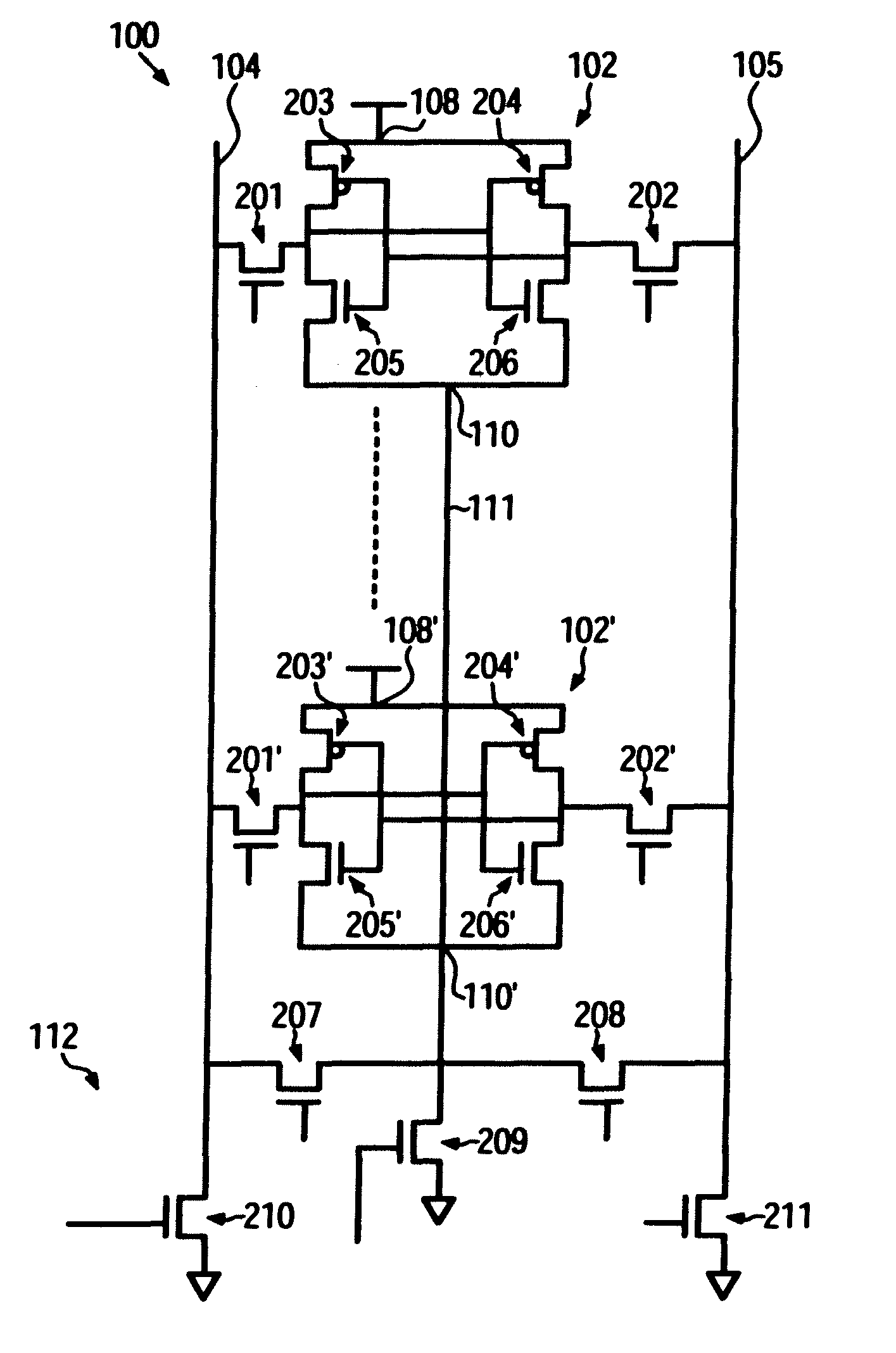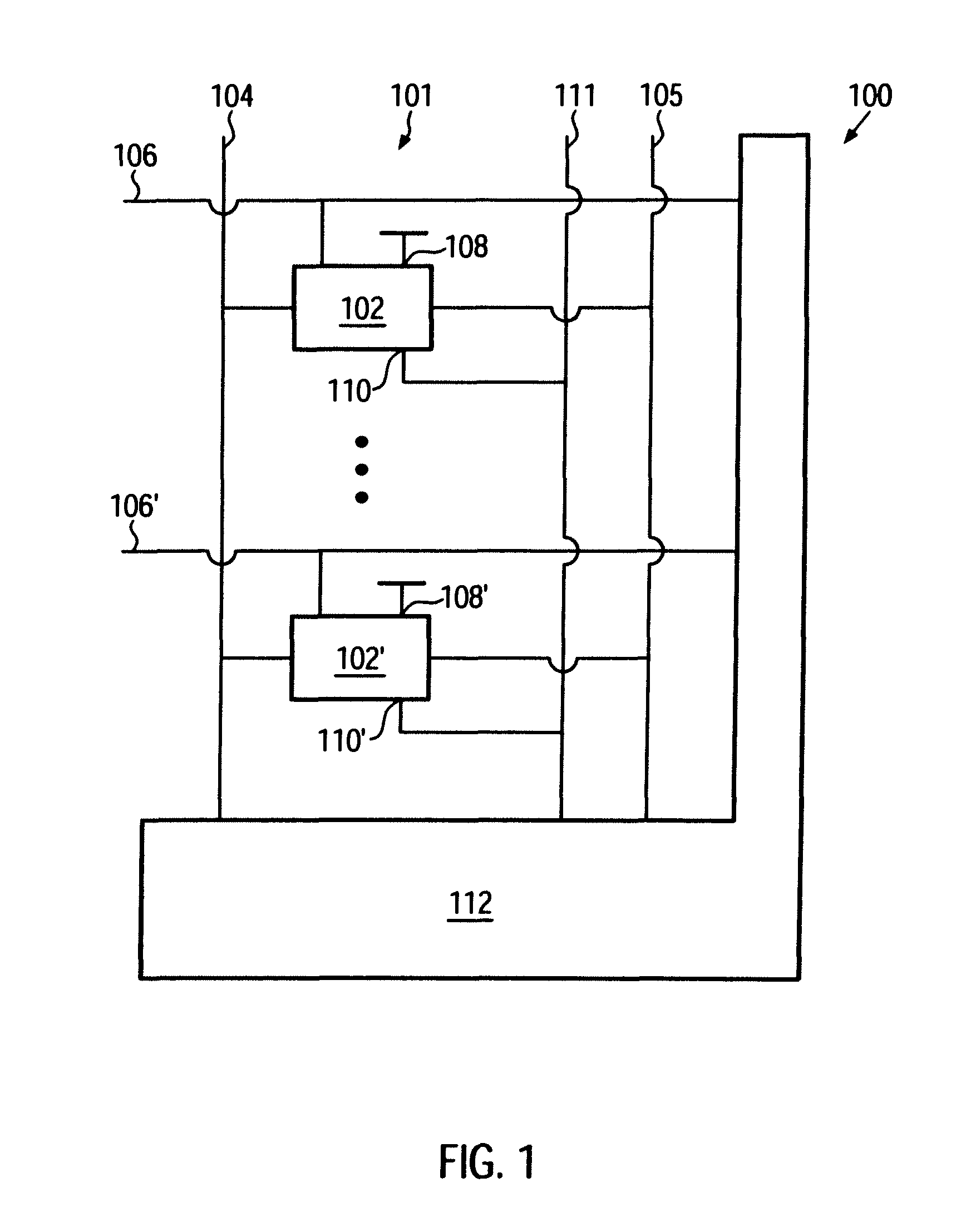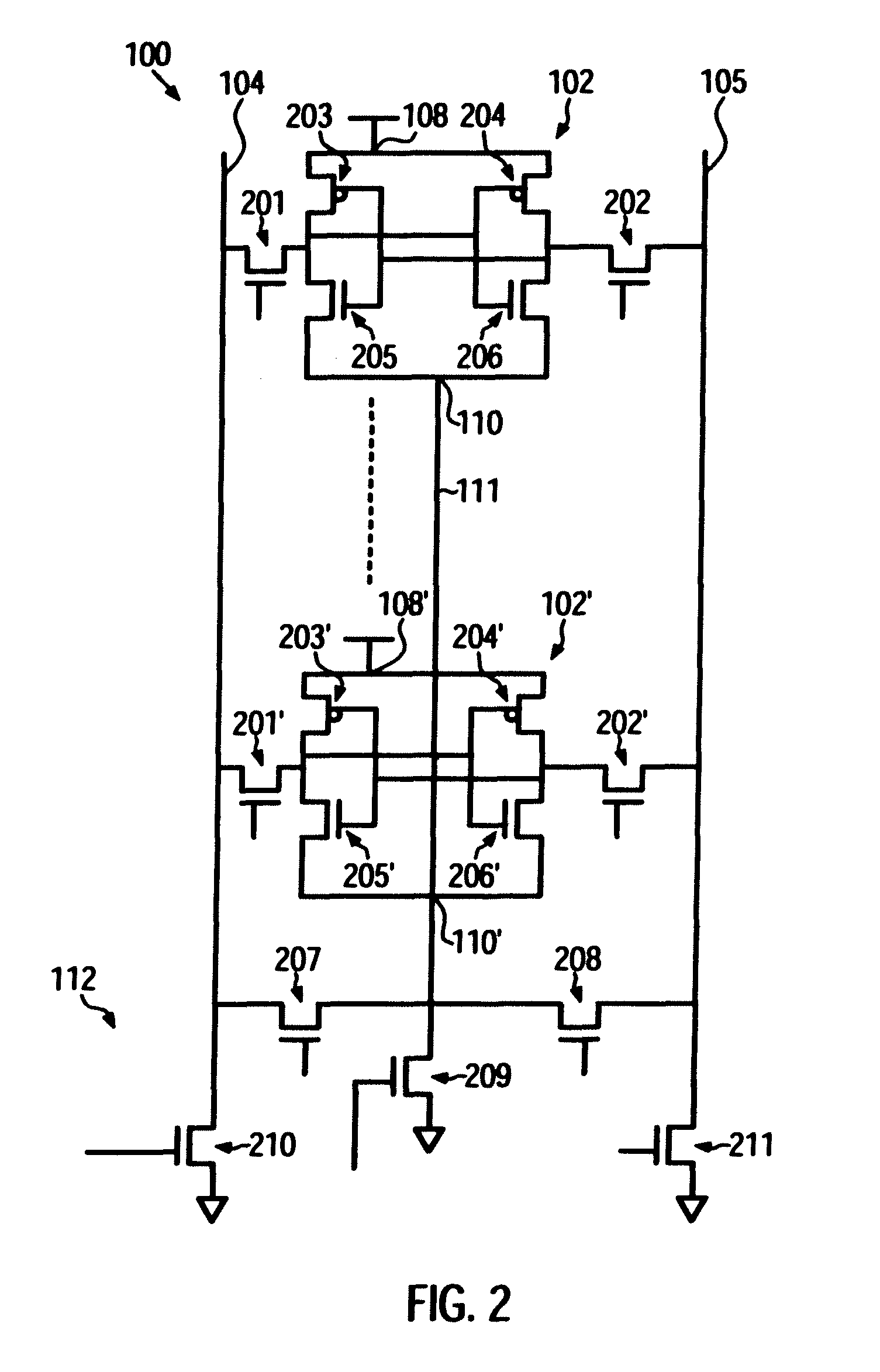Memory device and method of operation thereof
a memory device and memory technology, applied in the field of memory devices, can solve the problems of reducing the writability of memory cells of the sram device, power consumption of the device chip or chips, and power consumption of the device itself, and achieve the effect of lowering the electric potential
- Summary
- Abstract
- Description
- Claims
- Application Information
AI Technical Summary
Benefits of technology
Problems solved by technology
Method used
Image
Examples
Embodiment Construction
[0021]FIG. 1 shows a schematic block diagram of a memory device 100 according to an embodiment. The memory device 100 comprises a column 101 of memory cells. In addition to the column 101, the memory device 100 can comprise further columns of memory cells having a configuration corresponding to that of column 101. For simplicity, in FIG. 1, the other columns of memory cells have been omitted.
[0022]The column 101 comprises memory cells 102, 102′. Dots in FIG. 1 schematically indicate that additional memory cells can be provided between the memory cells 102, 102′. The memory cells in column 101, and in other columns of memory cells in the memory device 100, can form a matrix of memory cells.
[0023]The column 101 of memory cells can comprise a first bitline 104 and a second bitline 105 that can be complementary to the first bitline 104. Each of the memory cells 102, 102′ in column 101 can be connected to the first bitline 104 and the second bitline 105.
[0024]The present disclosure, howe...
PUM
 Login to View More
Login to View More Abstract
Description
Claims
Application Information
 Login to View More
Login to View More - R&D
- Intellectual Property
- Life Sciences
- Materials
- Tech Scout
- Unparalleled Data Quality
- Higher Quality Content
- 60% Fewer Hallucinations
Browse by: Latest US Patents, China's latest patents, Technical Efficacy Thesaurus, Application Domain, Technology Topic, Popular Technical Reports.
© 2025 PatSnap. All rights reserved.Legal|Privacy policy|Modern Slavery Act Transparency Statement|Sitemap|About US| Contact US: help@patsnap.com



